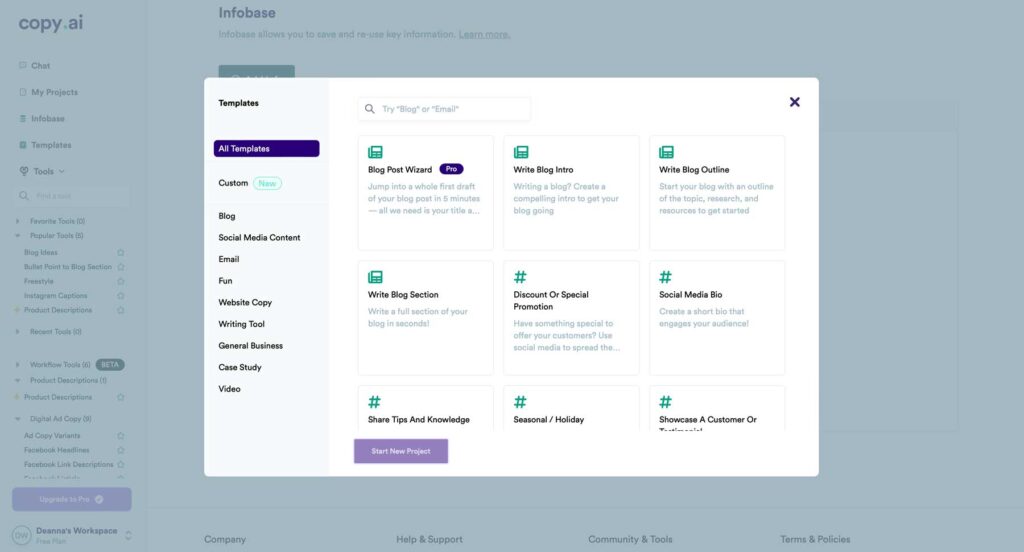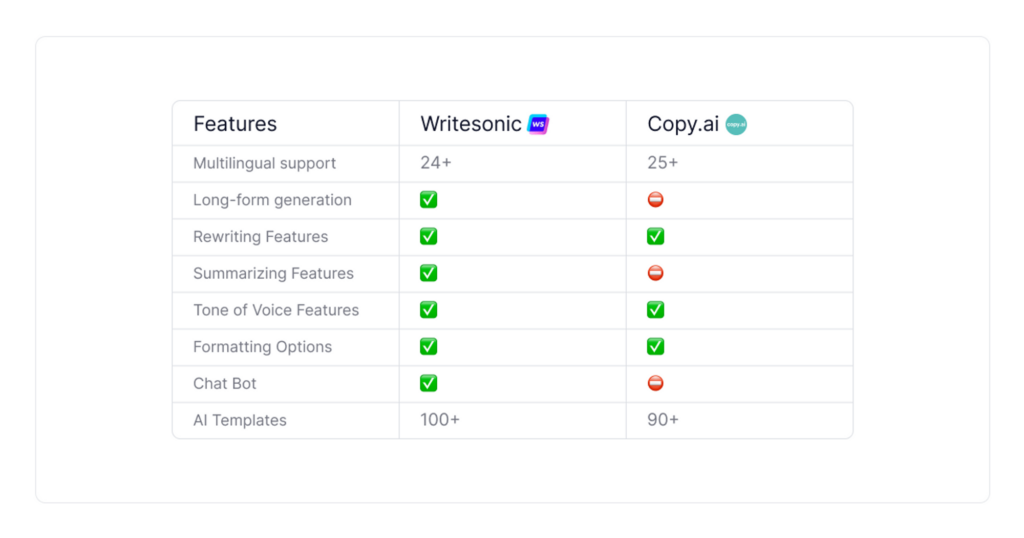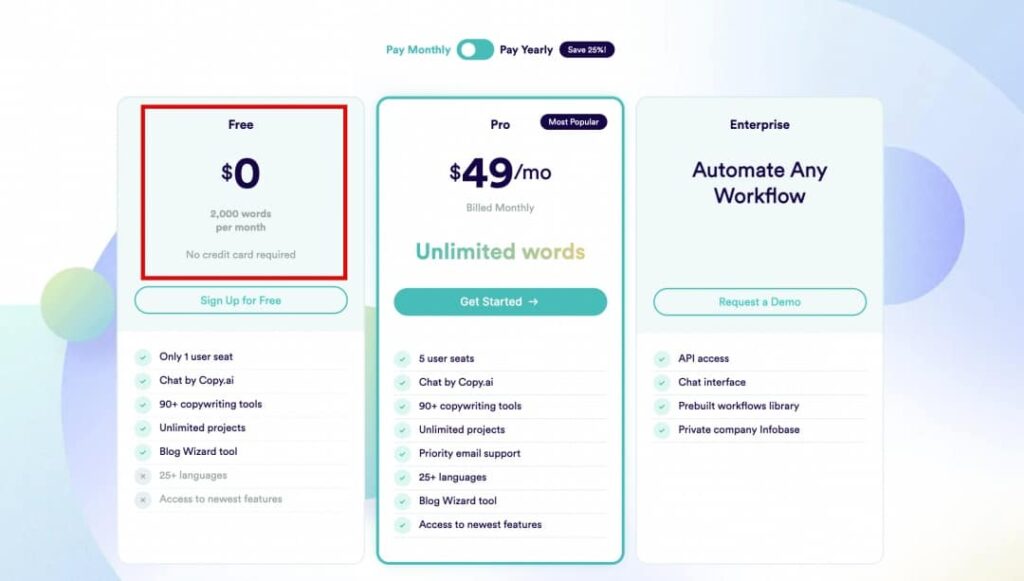AI-powered writing tools are emerging as vital allies for authors, marketers, and companies looking to automate their content development procedures in the quickly expanding field of content creation.
Copy AI and WriteSonic stick out as two strong contenders among the wide range of solutions available.
Which of the two tools is best at assisting users in producing high-quality content using artificial intelligence?
To assist you in making a wise choice, we’ll examine Copy AI and WriteSonic in this article.
Exploring Copy AI

Source: youtube.com
Some of the pioneers in AI research, including OpenAI, created Copy AI, originally known as GPT-3.
Because it is based on the GPT-3.5 design and has a large knowledge base, it can produce a variety of content, including articles, marketing copy, code, and original writing.
Copy AI may be integrated into a variety of applications and generate text using a huge dataset.
Understanding WriteSonic
On the other hand, WriteSonic is a more recent player in the market for AI writing tools.
The connection point’s straightforwardness and accentuation on actually delivering showcasing content have assisted it with obtaining ubiquity.
WriteSonic helps users write blog articles, product descriptions, and other types of content.
It tries to make writing easier for individuals with little expertise by providing a variety of templates to help with content development.
Compare Features

Source: youtube.com
Content Formats:
- Copy AI: Flexible duplicate man-made intelligence that can deal with various substance types.
- WriteSonic: It was developed mostly for marketing content.
Template-Based Approach:
- Copy AI: Provides direction without being template-driven.
- WriteSonic: It offers layouts for various types of content.
Effortless Use:
- Copy AI: A more significant handle on AI limits is central for imitating simulated intelligence.
- WriteSonic: It is simple to use and good for novices.
Customization:
- Copy AI: More opportunity in a happy age is given by copy AI.
- WriteSonic: simplified, possibly with little customizability.
Integration:
- Copy AI: Because of its API, Copy AI may be included into a wide range of programmes and platforms. This indicates that it can enhance your content development process and integrate effortlessly into your current workflow.
- WriteSonic: WriteSonic may have fewer integration capabilities than Copy AI. It very well might be less versatile concerning combination decisions because of its emphasis on publicizing materials.
Output Excellence:
- Copy AI: It typically generates high-quality content, although it may need to be edited.
- WriteSonic: It frequently yields positive outcomes and focuses on promotional content.
Pricing:

Source: youtube.com
- Copy AI: Offers a membership-based business system with use-based estimating in Copy AI.
- WriteSonic: It is another subscription-based platform with many price tiers.
Pain Support:
- Copy AI: Copy AI is a good option for creating foreign content because it supports numerous languages and can produce content in a variety of languages.
- WriteSonic: WriteSonic could likewise uphold a few languages; be that as it may, it often underlines English and could have downsides in different languages.
Output Length:
- Copy AI: Copy AI is adaptable for tasks requiring both brief duplicate and longer articles or reports since it can create both short-structure and long-structure material.
- WriteSonic: WriteSonic is designed for marketing content that needs to be short, such as blog articles and ad text. In terms of producing lengthy articles or documents, it might not be as efficient.
AI Models:
- Copy AI: The GPT-3.5 architecture, a potent and well-known model in the AI world, serves as the foundation for Copy AI.
- WriteSonic: The AI model that powers WriteSonic may use a different architecture. This should be taken into account by users who are interested in the AI model’s technical specifications.
Continual Updates:
- Copy AI: As an OpenAI product, Copy AI may frequently receive updates and enhancements, gaining from continuing efforts in both research and development.
- WriteSonic: WriteSonic could likewise get refreshes, albeit the volume and kind of changes will rely upon the advancement group’s accentuation and accessible assets.
Users as a Community:
- Copy AI: Since there is a sizable and active user base for Copy AI, users can find a tonne of information, lessons, and debates online about how to utilise the programme efficiently.
- WriteSonic: The accessibility of user-generated material and community assistance may be impacted by WriteSonic’s potential smaller user base.
Trial Periods:
- Copy AI: In order to provide consumers the opportunity to try out the product before committing to a subscription, Copy AI might provide trial periods or free access for a set amount of time.
- WriteSonic: Based on the developer’s policies, WriteSonic may also offer trial options, although the conditions and accessibility may change.
Making the Best Tool Choice for Your Needs
Your particular needs will eventually determine whether you select Copy AI or WriteSonic:
- Copy AI might be a better option if you require a flexible AI writing tool that can handle a variety of text types and has some AI experience.
- WriteSonic might be the best option if you are primarily searching for help with creating marketing material and want a user-friendly, template-driven approach.
It’s memorable’s pivotal that while advancements like Copy AI and WriteSonic could accelerate efficiency and save time, they shouldn’t replace the human touch in that frame of mind of content.
To ensure AI-generated content mirrors your image’s voice and message, consistently check and change it.
By the way, in my personal opinion, Copy AI is better tool than Writesonic due to number of reasons like high number of workflow templates, optimized AI writer, writing tones and fast speed with citations, plag check and much more.
To learn more about Copy AI features and benefits, check out this informative CopyAI review guide by Discoverthetech.
Pros and Cons of Copy AI and WriteSonic

Source: freepik.com
Pros of copy AI:
- Versatility: It is capable of handling a range of writing activities and content formats.
- Wide Information Base: It is knowledgeable since it is built on a lot of facts.
- Collaboration: Copy AI can be included in current processes and programmes.
Cons of copy AI:
- Learning curve: It might be necessary for consumers to have a basic knowledge of AI capabilities.
- Editing necessary Despite producing high-quality content, it could still require additional editing to be flawless.
- Pricing: For heavy users, the subscription-based approach with usage-based pricing may be expensive.
Pros of WriteSonic:
- User-Friendly: It’s simple to use, so even newcomers can use it.
- Templates: These tools help in content development by offering templates for particular content types.
- Ideal for creating marketing content and advertisement copy.
Cons of WriteSonic:
- Limited Versatility: Because it’s primarily designed for marketing content, it might not work well for many kinds of writing assignments.
- Customization: When compared to Copy AI, customization may be limited.
- Pricing: Similar to Copy AI, it uses a subscription-based model with variable costs based on usage.
Conclusion

Source: medium.com
Your choice ought to consider your one of a kind requirements for content creation, your involvement in artificial intelligence devices, and your spending plan.
Although both systems provide helpful AI support for content development, their strategies and advantages vary.
The easiest way to determine whether one fits your workflow and goals better may be to experiment with both.
Although AI writing tools are influential friends, the human touch is necessary to produce authentic and exciting work.



